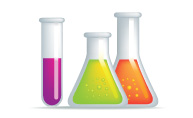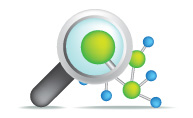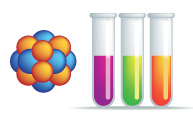SPARC
SPARC Performs Automated Reasoning in Chemistry
What is SPARC?
ARChem's physicochemical calculator, SPARC, uses computational algorithms based on fundamental chemical structure theory to estimate a wide variety of reactivity parameters strictly from molecular structure. This capability crosses chemical family boundaries to cover a broad range of organic compounds. Today the SPARC chemical modeling system is relatively mature and is used widely in academic, government and industrial laboratories.
SPARC Capabilities

Ionization pKa and Molecular Transformations
- Microscopic ionization constants with full breakdown of all mechanistic contributions contributing to the final result
- Full speciation as a function of pH. All molecular species presented as a function of pH and the corresponding Macroscopic pKa's determined with the species involved and their relative contributions displayed
- Calculation of the relative concentrations of species at a given pH
- Tautomeric constants and relative concentrations of tautomeric species
- Full speciation as a function of pH including consideration of tautomeric species and hydration
- Carbon (sp3) as an acid can be calculated
- LogD (water/user solvent partitioning) as a function of pH
- Non aqueous pKa can be calculated for any organic solvent that the user specifies
- Gas phase pKa can be calculated
- pKa in the presence of suspended solids defined by the user
- Hydration constants for carbonyls and quinazo compounds
- Hydrolysis rate constants for carboxylic acid esters in water and selected solvents
- Hydrolysis rate constants for phosphorous acid esters in water
- Batchmode pKa calculations using SMILES or SDF files

Molecular Properties (Solvent independent)
- Vapor Pressure as a function of temperature
- Boiling point as a function of ambient pressure
- Diffusion coefficient (air and water) as a function of temperature and pressure
- Molecular volume as a function of temperature
- Density as a function of temperature
- Refractive Index as a function of temperature
- Polarizability
- Electron affinity
- Solubility as a function of pH

Molecular Properties (In any user defined solvent)
- Henry's constant (gas/liquid partition constant) as a function of temperature
- Solubility (includes crystal energy contributions) as a function of temperature
- Activity coefficient as a function of temperature
- Liquid/liquid partitioning including octanol/water Kow. The user can specifiy any two user defined solvents if desired. These can be calculated as a function of temperature
- Reduction potential (E 1/2)
- Batchmode for all physical properties

SPARC Web Services API
- All of the above calculations (pKa, properties and batch) can be used through your own interface using the SPARC Web Services API
- Full documentation and examples are given for you to access the calculator through common RESTful and web service interfaces

View the SPARC manual with with video examples